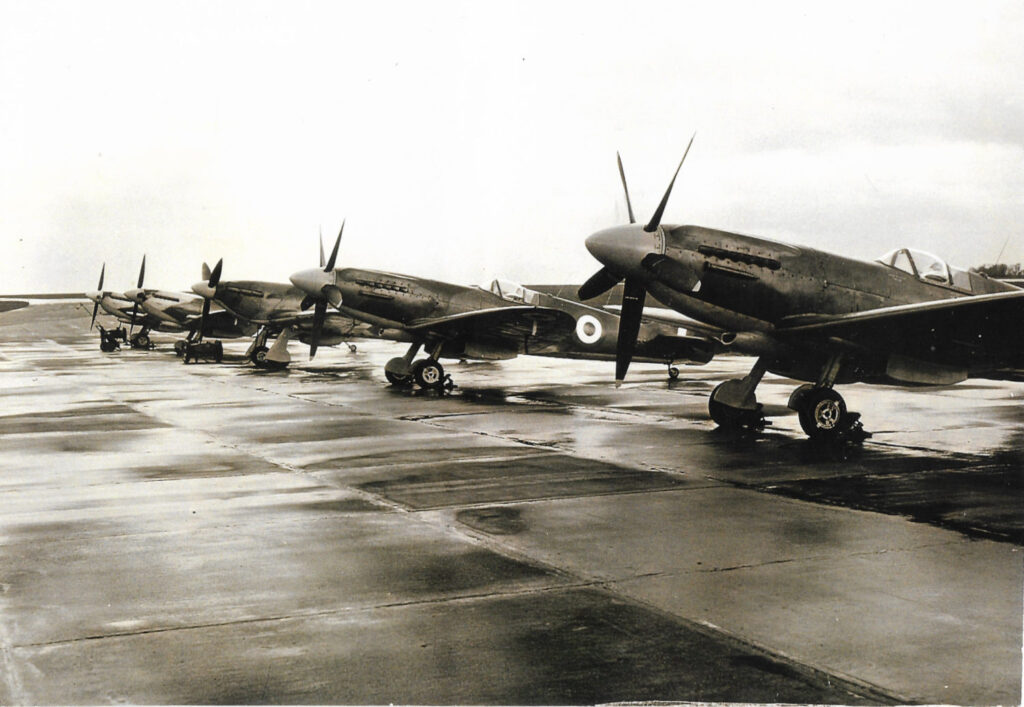BATTLE OF BRITAIN
60th Anniversary Display
by
The Royal Air Forces Association Bexhill-on-Sea Branch
In May 1940, German forces, with their superior numbers and superior weaponry, swept through France with remarkable speed. By 10th May, their invasion was virtually complete with any form of French resistance broken down by June. On 4th June the Dunkirk Evacuation brought tens of thousands of Allied soldiers back to British shores.
The French formally surrendered on 22nd June and it seemed inevitable that German forces would turn their attention to Britain. The threat from the air may have been most pressing, but the direct threat of invasion was also clear.
Churchill spoke to the House of Commons on 18th June and gave one of his most famous speeches in which he prepared his countrymen for the challenges that lay ahead:
“What General Weygand called the Battle of France is over. I expect that the Battle of Britain is about to begin. Upon this battle depends the survival of Christian civilisations.”
“Upon it depends our own British life, and the long continuity of our institutions and our Empire. The whole fury and might of the enemy must vry soon be turned on us.”
“Hitler knows that he will have to break us in this Island or lose the war. If we can stand up to him, all Europe may be free and the life of the world may move forward into broad, sunlit uplands. But if we fail, then the whole world, including the United States, including all that we have known and cared for, will sink into the abyss of a new Dark Age made more sinister, and perhaps more protracted, by the lights of perverted science.”
“Let us therefore brace ourselves to our duties, and so bear ourselves that if the British Empire and its Commonwealth last for a thousand years, men will still say, ‘This was their finest hour’.”
The Battle of Britain took place during the summer of 1940. By this time Hitler had control over Poland, Norway, France, Holland and Belgium. The next stage was the invasion of Britain, codenamed ‘Operation Sealion’. To do this the German air force (Luftwaffe) needed control of the air space. The battle took place officially from the 10 July to 31 October – 82 days and formed four distinctive phases:
- to test and weaken Britain’s defences attacks were made on shipping convoys around the south and east coasts and fighter attacks on south-east England.
- from the second week of August heavy bombing attacks were made on airfields and radar stations in the south of England which were planned to destroy RAF Fighter Command as an effective force.
- from 7 September the main assaults were switched to London with the aim of forcing british fighters into the air and cowing the civilian population. The ‘blitz’ saw major daylight attacks on London and industrial centres in north-west England.
- by late September ‘Operation Sealion’ had been cancelled and the enemy was making night bombing raids and daylight fighter sweeps and fighter bomber raids. The failure to gain control of the air space over Britain was the defeat Hitler faced.
“Day after sunlit day an average of one thousand German aeroplanes came over. Dawn after chilly dawn the weary British pilots assembled at their dispersal points and waited quietly for the telephone call which would send some of them to death even before breakfast.”
“Night after weary night the reckoning was made and though the advantage was constantly in Britain’s favour and though no doubt German pilots were almost as bone-weary as our own and the Luftwaffe morale must have been severely affected by the daily loss of dozens of crews…. “
Image 1, above (left)– June 1944. The first flying bomb in the town landed in Richmond Road and left a 30 ft. crater in the road as well as damaging many properties. Windows in St. Augustine’s Church were also blown out.
Image 2, above (right)– 24th November 1940 – W. G. Reeves was killed when a bomb destroyed his newspaper shop in Town Hall Square early on the Sunday morning. The area of the railway Goods Shed in the background has now been redeveloped as Sainsbury’s supermarket.
Image 3, above (left) – Newland’s Avenue after enemy bombing on 19th September, 1940
Image 4, above (right) – The Metropole Hotel, West Parade badly damaged by enemy bombing on 30th September 1940. The building was demolished after the war and is the site of a putting-green adjacent to the De La Warr Pavilion.


On Left – A Supermarine Spitfire which became the symbol of the Battle of Britain although there were more Hurricanes. The Spitfires were extremely agile and had a maximum speed of 361 mph.
On Right – Squadron Leader “Ginger” Lacy DFM and Bar, one of the six “highest score” pilots of Fighter Command.


On Left – Fighter pilots of 41 Squadron in 1940. Left to right: John Mackenzie DFC (NZ), Tony Lovell DFC, S S /L D. O. Finley DFC, Norman Ryder DFC and Roy Forde.
On Right – A Supermarine Spitfire Mk. 1A being re-armed in 1940. These planes had eight .303 inch Browning machine guns and a maximum speed of 360 m.p.d








